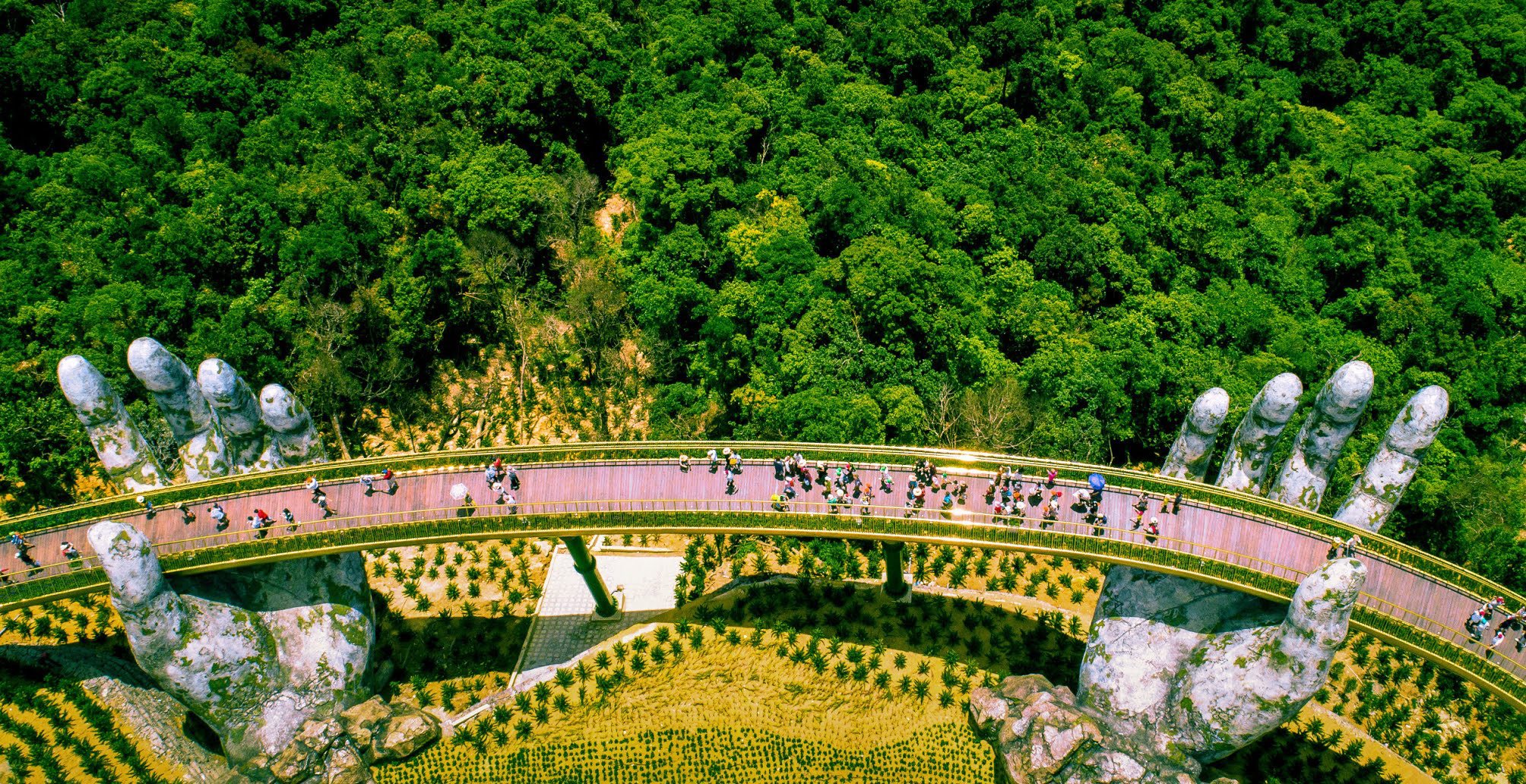Apr 01 2020, by Fleetwood Urban (Marketing)
CẦU VÀNG - Golden Bridge
The first time most people lay eyes upon the enchanting Cầu Vàng, or ‘Golden Bridge’, they assume it’s CGI or perhaps even a leftover prop from Avatar or Lord of the Rings. But rest assured this breathtaking 150-metre long, 5-metre wide footbridge in the Ba Nah hills of Vietnam is very real indeed. Amongst a stunning list of architectural awards, this seemingly made-for-Instagram (#CauVang) structure was voted as one of TIME Magazine’s ‘Greatest Places in the World’ in 2018 and continues to attract thousands of local and international visitors.
“The remarkable appearance of two huge hands looks like they drew the bridge out from the ground, adoring it as if it were a gift from nature. ”
TA Landscape Architecture.
The Team
Cầu Vàng was commissioned by the Sun Group, one of the largest real estate and resort developers in Vietnam. The design for the iconic footbridge was created by TA Landscape Architecture based in Ho Chi Minh City. Construction began in July 2017 and was completed less than a year later in April 2018. The bridge opened to the public in June 2018.
The Brief
Set amidst beautiful natural scenery and majestic cliffs, the Ba Na entertainment precinct overlooking the Vietnamese city of Da Nang has been a popular tourist destination since the mid-1950s. The construction of Cầu Vàng was commissioned by the current owners of the Ba Na Hills Resort, Sun Group, as part of a wider expansion program for the precinct. At a purely functional level, the brief called for a new footbridge to fill what was effectively a missing link in the route between the existing cable car station that services the Resort and its popular Thien Thai Garden. Sun Group also recognised the rich opportunity for the new structure to become a major drawcard in its own right by creating an internationally-recognisable visual landmark, providing sweeping views across Da Nang city and the neighbouring Truong Son mountain range and drawing visitors from across Asia and beyond.

Kerry Doss - Deputy Director, General Planning Group at Queensland’s Department of State Development, Manufacturing, Infrastructure and Planning
The Challenge
Stunning aesthetics were vital. But like all great Access structures, Cầu Vàng also needed to serve an entirely practical function. This required a solution where form and function would collide brilliantly, easier said than done when the bridge was located in a hard-to-access pocket of Vietnam some 1,400m above sea level. The key challenge was how to insert the bridge structure into an ecologically sensitive site, without causing damage or disruption to the pristine cliffs below. Calling upon the extensive use of parametric software and expert fabrication techniques, it was decided the bridge should be constructed using a series of branching columns. This would reduce the quantity of columns required, whilst also delivering environmental and aesthetic benefits to the finished project.
The Design
Inspired by the spectacular natural setting and the mythology of superhuman Gods, Cầu Vàng was designed to appear like a golden ribbon in the sky, ‘a path between heaven and earth’. The initial vision proposed by TA Landscape Architects was for an ambitious elevated pedestrian bridge joining the two ends of the cliff. However, height constraints saw the design team ultimately chose a more fluid and winding arc-shaped structure. Following the line of the adjoining mountainside, the final design comprised eight separate spans over the 150 metre length, with the longest span measuring 21.2 metres. Without question, the bridge’s most notable design features are the two giant ‘stone’ hands reaching out from the lush mountainside. While designed to look like weathered and mossy ruins, they’re actually constructed from state-of-the-art fibreglass and wire mesh. Although the hands appear to be lifting the entire bridge structure, they’re non-loadbearing. Timber decking and green bridge columns in the form of trees were specified to blend in with the surrounding forest and create the impression of a hovering structure, while the ethereal golden stainless steel handrails inspired the name, Cầu Vàng or ‘Golden Bridge’.
Awards
TIME Magazine ‘100 Greatest Places in the World’ 2018
Like to know more about Cầu Vàng?
You can view a short interview with Vi Viet Anh, Design Principal at TA Landscape Architecture, here.



